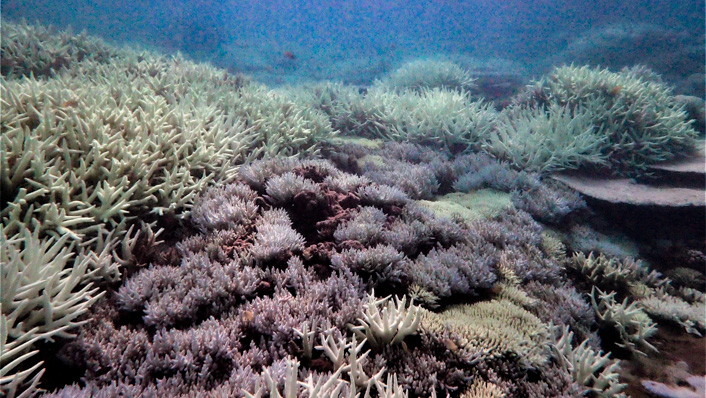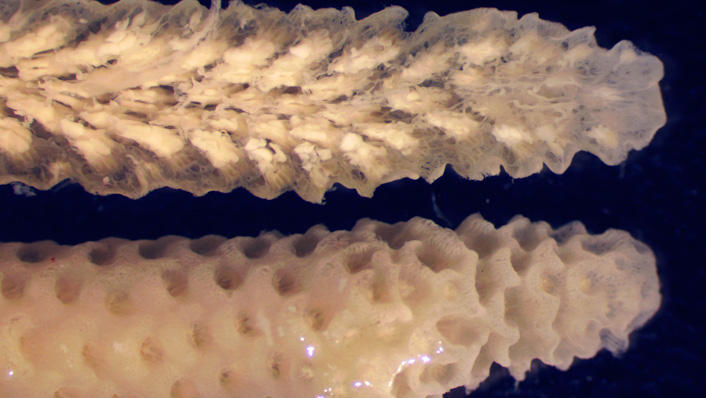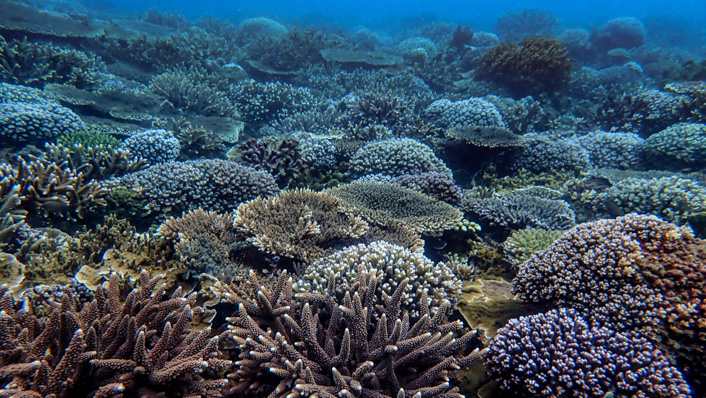Bleaching can suppress reproduction in a common coral species found in the Great Barrier Reef, hampering future reef replenishment, new research led by the Australian Institute of Marine Science (AIMS) and James Cook University (JCU) has identified.
The research on populations of a branching stony coral (Acropora millepora) in Woppaburra sea Country of the Keppel Islands near Yeppoon, highlights the importance of overlooked impacts of bleaching events and how they can impede recovery.

The research is published as aerial surveys undertaken by AIMS and the Great Barrier Reef Marine Park Authority (GBRMPA) have event since 2016 unfolding across the Great Barrier Reef Marine Park.
Aerial surveys over the Keppel Islands in February observed extensive bleaching in nearshore areas consistent with increased sea surface temperatures and accumulated heat exposure in the wider southern region. In-water surveys conducted by AIMS are continuing in order to assess the severity of the bleaching.
Lead author Nico Briggs, an student, said his study found a 21% decrease in the reproductive output of Acropora millepora despite apparent recovery and low mortality after the 2020 mass bleaching event.
“ isn’t always a death sentence for every coral. Corals can and do recover if stress inducing conditions subside. But our research shows there is a price to pay for recovery in terms of a coral’s reproductive capacity, which is a critical driver of post-disturbance replenishment on coral reefs,” Mr Briggs said.
“We are seeing more frequent and severe bleaching events driven by climate change on the Great Barrier Reef and reefs worldwide. Our findings add to the mounting evidence that surviving coral populations are facing an increasingly uphill battle for recovery, in part due to sublethal impacts of bleaching events.”
Mr Briggs and his co-authors collected samples from almost 100 Acropora millepora colonies that were known to have bleached in the 2020 event and survived. The samples were collected six months after the bleaching and just before the annual coral spawning event in late October.
In dissecting the samples, the scientists found the number eggs produced within coral polyps decreased by 21% in colonies which had bleached severely, despite visual recovery, or return of the corals’ colour.

Recent in-water work by AIMS scientists included collecting samples from these corals to understand how the colonies have responded to this latest bleaching. More samples will be collected prior to the annual coral spawning later in the year.
Co author said understanding how bleaching affects coral reproduction is a vital step towards improving predictions of reef trajectories under a warming climate.
“We know that the corals in Woppaburra sea Country are . There was little mortality after the 2020 bleaching event, despite these corals being exposed to accumulated heat stress that often results in mortality,” she said.

“Their resilience is partly to do with environmental conditions in the region, with tides and currents helping to reduce water temperatures, provide sun protection and deliver extra food. But as this research shows, they paid a price for their recovery.
“The impact of bleaching on reproduction is likely to vary among coral species. Understanding this will help us to know what these reefs may look like in five to 10 years time, helping us to target interventions.”
Mr Briggs added the paper also highlighted the importance of a multi-faceted approach to helping coral reefs under a changing climate.
“Typical assessments of coral health after a bleaching event consist of surveys to determine how much coral lived or died, but these surveys miss longer-term impacts to health, such as impacts to reproduction and growth.
“The best chance for coral reefs to persist into the future requires a strong reduction in global greenhouse emissions to stabilise temperatures, best practice management of local pressures, and the development of innovative interventions to help boost climate tolerance and resilience for coral reefs,” he said.
The research was co authored by researchers from AIMS, JCU and the University of New Caledonia. It was in the journal Coral Reefs.
The research was carried out as part of the Woppaburra Coral Project, a component of the , a research partnership between AIMS and BHP.
Feature image: Darren Brighton






